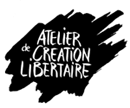|
|
|
La culture libertaire
ANARCHIST STUDY octobre 1998
La Culture Libertaire is quite different from the other four works : while it contains some historical essays, the bulk of the work takes the form of a collective assessment of the anarchist record during the twentieth century, and discussions of modern and future forms of anarchism. 34 authors are involved. coming from nine different countries : Italy, France, USA, Argentina, Holland, Switzerland, Spain, Poland and Britain. The essays vary in length, style and politics, but this 466 page collection is not as eclectic as it might sound. One constant throughout its pages is the extremely high quality of writing and analysis ; a second is the desire to grasp the historical record of « classical » anarchism, and to compare it with the present reality of `post-classical’ anarchism. In this already-too-long review it is impossible to assess properly all 34 contributions : I will limit myself firstly to listing some of most interesting essays. and then saying a few words about those of most relevance to historians.
Peitro Adamo distinguishes between an older concept of anarchism as a political project, and the contemporary idea of anarchism as an ethos : Pierre Ansart writes a well-crafted defence of the relevance of Proudhon’s ideas : Los Arenalejos (a Spanish collective) discuss childbirth and the possibilities for the reform of this experience ; René Bianco studies libertarian publishing in France over the last 115 years. and produces some evidence for cautious optimism : Eduardo Colombo writes of the repression suffered by FORA in Argentina in the 1950s ; Rossella Di Leo contributes a genuinely inspired essay which studies the relationship between a loosely defined libertarian current in Italian political culture and the more tightly structured anarchist organisations – she compares the relationship between the two with forets of marriages in a way which initially seems merely amusing, but which opens up a range of insights ; Gerda Fellay celebrates the ideas on libertarian education of Friedrich Liebling (1893-19821 ; Emmanuel Lizcano produces a challenging and thought-provoking essay on the Western cult of science ; JeanOlivier Majastre considers anarchism and aesthetics ; Anna Niedzwiecka Kraszewskiego summarises briefly libertarian publishing in Poland since 1980 ; Philippe Pelletier discusses « Oriental anarchism » ; Mimmo Pucciarelli presents a well-researched sociological analysis of contemporary French anarchist organisations ; Patrice Terrone writes a magnificent study of the nature of caricature and its use by anarchist artists and writers : Alain Thévenet produces an essay on Godwin which can only be described as charming, and which merits republication as the introduction to an edition of Godwin’s works ; Salvo Vaccaro considers Foucault’s attitudes to anarchism : Colin Ward contributes a well-considered summary of hi s considerable research on libertarian architecture
Some of these essays are directly relevant to the topics raised in this review. Ronald Creagh criticises the hagiographie approach to past anarchist organisations which fails to recognise their real failings. and argues that the future basis of’ anarchism will be in cultural action. Daniel Grinherg produces a highly original essay which attempts to identify the distinctive qualities of an anarchist culture. In the last analysis, I think he confuses culture in the old sense of « high » culture (drama, paintings, opera) with the more recent concept of culture as an everyday experience, but this essay is still an extremely valuable, pioneering study. Gaetano Manfredonia contributes a detailed study of anarchist songs frotn the fin-de-siècle, arguing that it is in their images that we can find the unique characteristics which distinguish anarchism from other political movements. Alain Pessin. in another highly original essay, attempts to identify themes in imagery of anarchism which remain constant throughout its varied past.
However. it is Claire Auzias’s essay on the transmission of libertarian values (cited in the epigraph Io this review) which comes closest to defining an anarchist culture.
« Libertarian culture is the entirety of libertarians’ lives, all their products. Their dreams. songs. papers, and printshops : their strikes and their smashing of the chopwindows on campus : their meetings : their private choices, their public choices and their failures to choose : the ways in which they structured their will for emancipation within the surrounding environment : their relationships among themselves and with others. Libertarian culture is the way in which libertarians live. » (p.387)
This rich and varied collection of essays represents one of the mort exciting, provocative and constructive interventions in anarchist research in recent decades, and deserves a long success.
Ten years on from Goodway’s essay, what have we learnt ? There are some signs (eg Radcliff and Gutiérrez Molina) that the connection between social history and anarchist historiography is being made. On the other hand, postmodernism is setting another agenda : how these new forms of thinking will effect the historiography of anarchism remains to be seen. While Castoriadis was happy to reject po-mo (« the only good thing about postmodernism is that it reminds us how great was modernism »), works such as Vandervort’s show how this type of attitude can develop into a conservative form of thinking. Tucker’s book allows us to glimpse what a postmodem anarchism might look like. but it also serves to show how difficult it is to make the connection.
SHARIF GEMIE - UNIVERSITY OF GLAMORGAN
|
|
|
|
|













